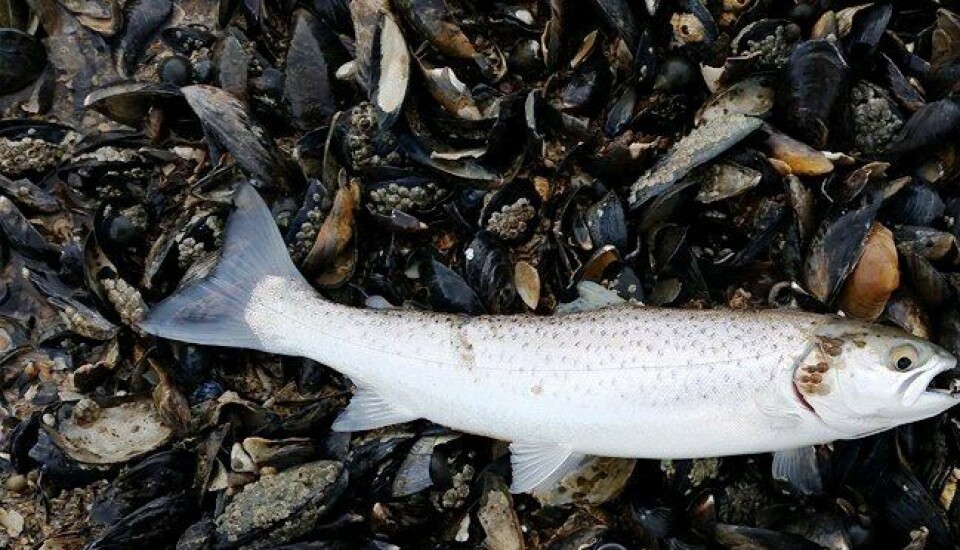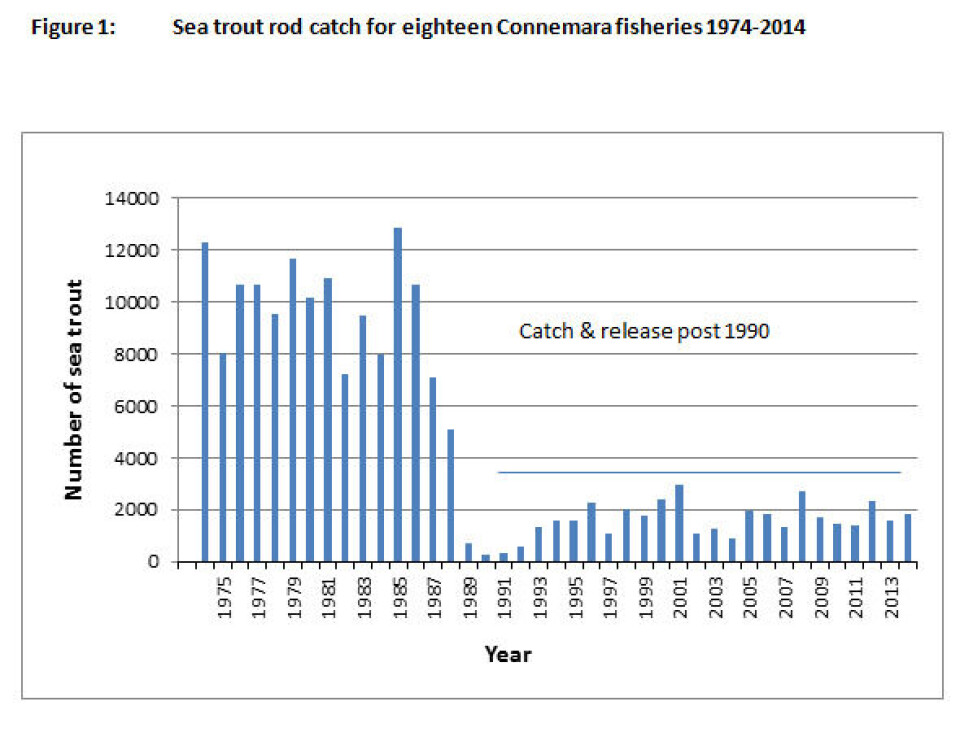
Farms face fresh lice link
New research, which found that sea trout captured near marine salmon farms carry significantly higher levels of sea lice, has been welcomed by the Board of Inland Fisheries Ireland (IFI).
The study was undertaken by scientists from IFI and Argyll Fisheries Trust. Researchers examined sea lice levels over 25 years, from more than 20,000 sea trout. The fish were sampled from 94 separate river and lake systems in Ireland and Scotland at varying distances from salmon farms.
The research revealed that sea trout captured closer to salmon farms had significantly higher levels of lice infestation and were found to be of reduced weight. According to IFI, sea trout are known to remain for extended periods in near-coastal waters where the majority of salmon farms are located, making them particularly vulnerable to sea lice impact.
The effect of the increased lice infestation was most evident in years of less rainfall, when a sea trout of average length (180mm) caught within 10 kilometres of a farm could weigh up to 10g less than fish of similar length caught more than 40 kilometres from a farm. The study covered the entire coasts of western Ireland and Scotland and accounted for variability in temperature and rainfall.
The research article, entitled ‘Aquaculture and environmental drivers of salmon lice infestation and body condition in sea trout’ was authored by IFI’s Dr Samuel Shephard and Dr Paddy Gargan, alongside Craig MacIntyre of the Argyll Fisheries Trust. It was published in Aquaculture Environment Interactions in October.

IFI’s Dr Paddy Gargan said: “While there had been some improvement in sea lice control in recent years, lice control on salmon farms was still not sufficient in certain west of Ireland bays during the spring migration period for sea trout to avoid heavy lice infestation and increased marine mortality. More effort is required to ensure lice levels on salmon farms are adequately controlled at this critical period when sea trout leave freshwater and enter the sea.”
Dr Cathal Gallagher, Head of Research and Development at IFI, said: “The finding that salmon farming is responsible for increased sea lice infestation and for significantly reduced body condition in sea trout may have implications for current lice control management strategies. This research will inform coastal zone planning of aquaculture in the future and contribute towards the avoidance of potential impact on sea trout stocks.”




















































